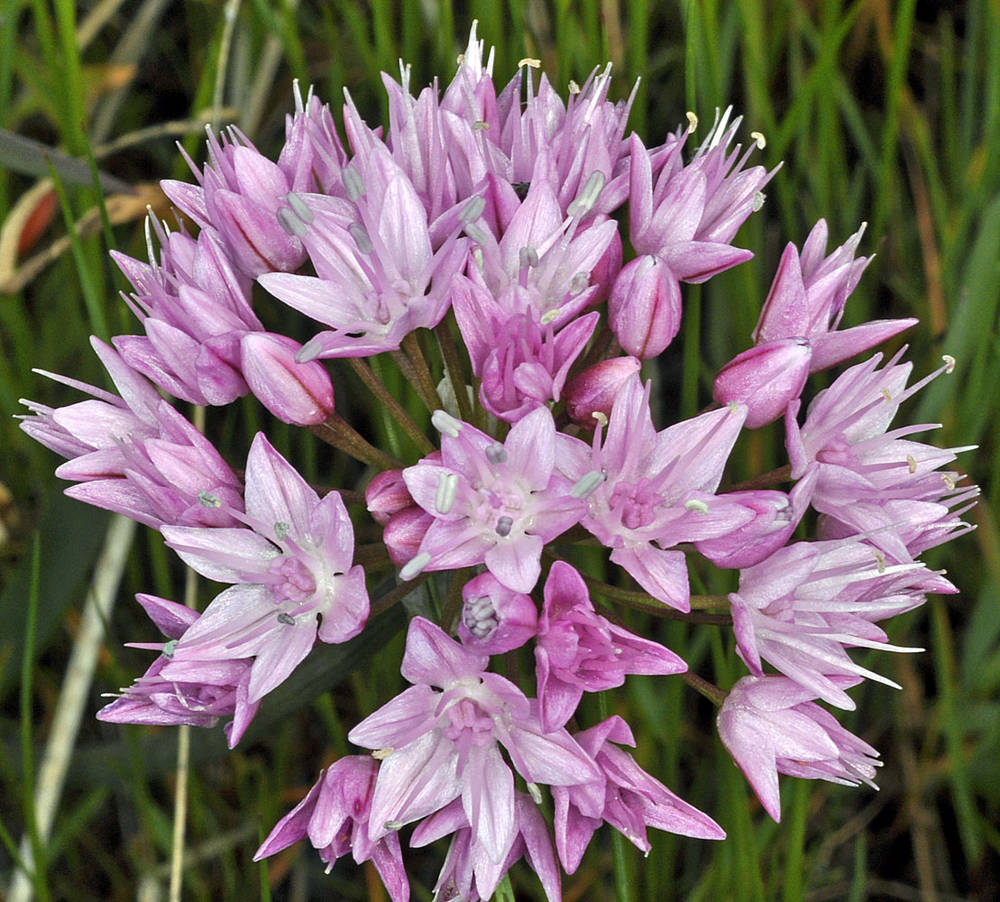Allium nevii
Allium nigrum
Nevius' onion
black garlic, Homer's garlic
1–5+; ovoid;
outer coats enclosing 1 or more bulbs, membranous; more or less reticulate;
cells quadrate to polygonal, vertically oblong; without fibers.
3–4; ovoid;
outer coats enclosing 1 or more bulbs; thin; papery, reticulate;
cells narrow, vertically elongate; without fibers.
usually persistent, withering from tip at anthesis, 2;
blades solid; flat or more or less channeled, falcate, 12–25 cm × 2–3 mm.
usually persistent, 3–6;
blades solid; flat, broadly channeled, 10–60 cm × 10–25 mm.
persistent, 1–3; erect; solid; terete or somewhat flattened, 2-edged, not expanded proximal to inflorescence, 15–30 cm × 1–3 mm.
usually persistent; solitary; erect; solid; terete; hollow, 60–100 cm × 5–10 mm.
persistent; erect; compact, 10–30-flowered, hemispheric;
pedicels 8–12 mm;
spathe bracts 2.
persistent; erect; compact, 75–150-flowered, hemispheric-globose;
pedicels 25–40 mm;
spathe bracts 2–4.
6–8 mm;
tepals spreading, lanceolate; more or less equal; rose-colored;
margins entire;
apex acuminate;
stamens more or less equaling tepals, or exserted;
ovary distinctly crested with 6 low processes;
stigma unlobed.
6–9 mm;
tepals more or less spreading, narrowly oblong; more or less equal, white with green midvein;
margins entire;
apex obtuse;
stamens included;
ovary crestless;
stigma scarcely thickened, obscurely 3-lobed.
=14.
Allium nevii
Allium nigrum
Wet meadows and along streams, in rocky clay soils, seasonally moist scablands. Flowering Apr–Jun. 0–1200 m. Col, ECas. WA. Native.
Disturbed roadsides. Flowering Jun. 50–100 m. WV. Mediterranean. Exotic.
Oregon has the only known naturalized population of A. nigrum in North America. It seems highly probable, however, that this species has escaped elsewhere.
Nick Otting, Richard Brainerd, Barbara Wilson
Nick Otting, Richard Brainerd, Barbara Wilson




